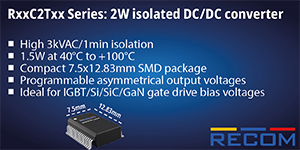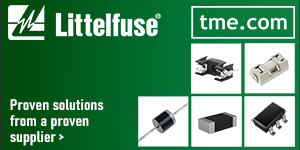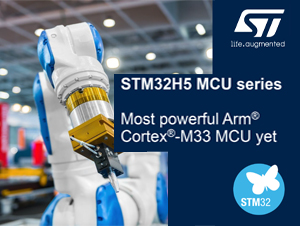 INTRODUCTION
INTRODUCTION
With electronics being such an integral part of modern life, it’s critical to ensure that the disposition of these electronics at their end of life is responsible. Electronics contain nonrenewable resources and hazardous materials that pose a significant danger to both human health and the environment. It is imperative that society be aware of the hazards created by the improper disposal of electronics as well as what actions are necessary to reduce the potential harmful impact that electronics can have on our planet.
This e-book provides information about what nonrenewable materials can be found in various types of electronics, how to extend the usable life of electronic devices, the implicit hazards of e-waste, why reusing or refurbishing is preferable to recycling, and why the proper disposal of electronic waste is crucial to sustainability. Beyond that, it tells how Arrow Value Recovery can assist with the safe and responsible disposition of electronics that have reached the end of their useful life.
E-WASTE DEFINED
[box type=”shadow” align=”alignleft” ]In 2014, 41.8 million tons (83.6 billion pounds) of e-waste were generated worldwide. These numbers are expected to grow annually by 4%-5%.[/box]
In 2014, 41.8 million tons (83.6 billion pounds) of e-waste were generated worldwide.1 With a global population of 7.1 billion people, that equates to 11.7 pounds of e-waste per inhabitant, and these values are expected to grow annually by 4%-5%. Note that at least 1 billion people worldwide do not have electricity, so the actual per-person number for those with electricity is significantly higher.
What Exactly Is E-waste?
According to the Global E-Waste Monitor, e-waste is defined as “all items of electrical and electronic equipment (EEE) and its parts that have been discarded by its owner as waste without the intent of reuse.”2
The most common forms of electronic waste, or e-waste, are:
- Laptops, tablets, desktops, servers, and networking gear
- Mobile phones, routers, printers, and copy machines
- Refrigerators and air conditioners
- Fluorescent lamps and CFLs (compact fluorescent lamps — the energy-saving light bulbs now being replaced by LEDs due to their mercury content)
- Washing machines, dryers, stoves, and microwaves
- Televisions, toasters, calculators, radios, and GPS equipment
Businesses across the globe use electronics extensively in their day-to-day operations. However, the current lifespan of electronics such as laptops, tablets, smartphones, and desktop computers is relatively short. At some point, these electronics reach the end of their useful life and need to be disposed of.
How these electronics are disposed of has a significant impact on human health and the environment, and with a growing electronics industry that shows no indication of deceleration, the disposal of e-waste is a significant global concern.
THE PROBLEMS WITH E-WASTE
Failure to properly recycle electronic waste is causing a global environmental crisis. With the rate of e-waste growing exponentially, how businesses choose to dispose of their electronics has become an important topic. There are a number of options for businesses of all kinds to efficiently and cost-effectively reuse, refurbish, donate, or recycle their electronics and prevent further contribution to the e-waste stream.
Keeping Electronics Out of Landfills
[box type=”shadow” align=”alignleft” ]Electronics placed in the trash will end up in either a landfill or will be incinerated — both negative impacts on the environment.[/box]
It’s easy enough to toss an old mobile phone in the trash when you get a new one, or keep it in a closet full of old, unused electronics to deal with at some distant time. But it is imperative that these behaviors change. Companies that provide their employees with electronics may have significant numbers of outdated mobile phones, tablets, and laptops that require disposition, leaving business owners unsure of what steps need to be taken next. Both individuals and businesses should be encouraged to follow some straightforward guidance to keep their electronics out of the trash, which ultimately goes either to a landfill or is incinerated — both negative impacts on the environment.
Data Security
[box type=”shadow” align=”alignleft” ]Deleting data or reformatting hard disks is not sufficient to satisfy regulatory requirements for data cleansing. These measures do not remove the data from the computer. Formatting, for example, simply overwrites indexed tables but may delete little actual data.[/box]
Electronics of all shapes and sizes contain personal or sensitive data that should be professionally eradicated. Smartphones contain data in numerous places that are difficult for the average user to locate, and this information cannot be easily erased.3 Data that is housed on laptops, desktops, and servers cannot be eliminated completely with a simple “file delete” command. And networking gear, including routers, copiers, and scanners, also retains data and must be intentionally cleansed.
Toxic Compounds
Electronics contain many hazardous substances that, when thrown away, put the integrity of the environment and human health in jeopardy. If these compounds wind up in a landfill, they can poison the water and soil. If they are incinerated, they emit toxic gases. Among the most common toxic and potentially dangerous materials used in modern electronics are cadmium, lead, and mercury.4
Conflict Minerals
Also found in electronics are minerals such as gold, tantalum, tungsten, and tin. When these metals are mined in certain areas in the Democratic Republic of Congo and adjacent countries, they are part of a violent economy.5 To ensure these metals are reclaimed and can be reused as conflict free, they must be processed carefully so that their origin can be known.
Rare Earth Elements
Much of what enables electronics to function the way they do is attributable to the capabilities found in certain kinds of minerals known as rare earth elements.6 Extending the life of electronics through repair, reuse, or donation allows for the maximum value of these rare earth elements to be utilized.
These materials are used in such minuscule quantities in electronics that recovering them directly is currently not practical.
E-waste is a current crisis that must be mitigated. Businesses that discover and employ the responsible disposition of unwanted or unusable electronics not only reduce their contribution to the e-waste stream, but also simultaneously increase the value these electronics present to their own company.
EXTENDING THE ELECTRONICS LIFESPAN
[box type=”shadow” align=”alignleft” ]Extending the life of electronic devices keeps them out of the waste stream. Options include:
- Reuse
- Redeployment
- Donation[/box]
At some point, all electronics reach the end of their useful life. However, what is often considered the “end” of an electronic device’s life really isn’t its actual end. There are numerous ways to extend the usable life of an electronic device in order to prevent it from entering the e-waste stream. Although a device will eventually truly reach the end of its life and will need to be disposed of properly, extending the life of a device will contribute to the reduction of the amount of e-waste being created annually.s
There are a wide variety of options available to extend the usable life of one or more electronic devices.7
Options for Devices That Are No Longer Being Used but Are Still in Working Order
For businesses, there are a number of dedicated IT asset disposition (ITAD) companies that specialize in helping companies properly manage their retired IT assets. These firms specialize in managing the risks associated with proper data erasure and environmental disposition. It is recommended that businesses not attempt to manage the process themselves, as there are many hidden risks associated with properly disposing of electronics.
For businesses replacing devices for their employees, there are several options an IT asset disposition provider will offer to extend the life of the electronic devices:
- Reuse/Remarketing
Businesses can recover a portion of the capital they’ve invested in IT assets by remarketing retired equipment through a professional ITAD provider. With appropriate remarketing techniques, old electronics will be sanitized of data and, if needed, repaired and imaged with a new operating system, so they can be remarketed and used in a “like new” condition. Businesses should always employ the services of a reputable ITAD provider to protect their data, meet all data security and environmental regulations, ensure chain of custody, and ensure that old devices can be refurbished to the best possible condition for the highest ROI. Allowing an ITAD provider to sell technology on a company’s behalf means the original ownership is hidden from the buyer and any liability rests with the ITAD provider.
- Redeployment within an Organization
Many businesses choose to redeploy their electronics within their own company. However, it’s important to be aware that simply deleting critical files from the device before sending it to another department isn’t enough to protect sensitive data. Smartphones, for example, hide data in many places on a phone that are not typically known or accessible without specialized knowledge. Devices must first be properly and professionally sanitized and, when necessary, refurbished, in order to be successfully redeployed. Sensitive data recovered by anyone other than its intended owner is still a data breach, regardless of where the device is reused, and organizations can be held liable under data protection legislation.
- Charitable Donation
Many people, both nationally and worldwide, don’t have access to technology that is quickly becoming a necessity in today’s fast-paced world. Businesses that choose to donate electronics their company is no longer using to a charity that accepts working electronics can help bridge the digital divide. If a business wishes to donate electronics, it is critical to work with a professional ITAD provider with experience in charitable donation. An IT asset disposition company will ensure that adequate data sanitization takes place, that the devices do in fact work or make any minor necessary repairs, that the device has a licensed operating system, and that the electronics are donated to a reputable charity. Again, allowing the ITAD provider to be the intermediary means that any issues the recipient has will go back to the ITAD provider, not to the donating organization.
Options for Devices That No Longer Work
[box type=”shadow” align=”alignleft” ]When businesses choose to take actions to extend the useful life of their electronics, they are able to extract maximum value from these devices and prevent them from entering the e-waste stream for as long as possible.[/box]
If an electronic device has malfunctioned in some way, there are a variety of options available to repair or refurbish the device to restore it to working order. Often, minor issues like a cracked screen, scratches, missing keys, or a virus can be repaired, and the device is restored to usable condition by a reputable electronics refurbishment center. Businesses may continue to use a repaired or refurbished device by redeploying it elsewhere in their organization, or may choose to remarket or donate the device through an ITAD partner.
When businesses choose to take actions to extend the useful life of their electronics, they are able to extract maximum value from these devices and prevent them from entering the e-waste stream for as long as possible. The sheer amount of energy and nonrenewable resources that go into manufacturing a single electronic device demands that devices be utilized to their fullest extent. Where appropriate, devices can be repaired or refurbished, redeployed for continued use within an organization, donated, or remarketed to another user.
THE RESPONSIBLE DISPOSITION OF ELECTRONICS
If an electronic device has truly come to the end of its life cycle and cannot be repaired or refurbished, it is imperative that the disposition of electronic devices be responsible. Businesses face a multitude of challenges when disposing of electronics, beginning with the requirement to protect the company’s sensitive data, as not doing so can create a significant security risk. Additionally, the toxic minerals and compounds in electronic devices need to be properly safeguarded so that they are not thrown away or incinerated, becoming e-waste. Using a reputable IT asset disposition firm is recommended.
Electronics Recycling
The most essential concern when recycling electronic devices is to ensure that the electronics are recycled according to the highest environmental standards, which vary by city, state, and country. In some cases it may be possible to recover some valuable components from a device for reuse in other electronics, and then the remainder of the device can be recycled down to its core commodities.
Only a professional IT asset disposition company can completely sanitize electronics, determine what market value can still be obtained in reuse, and properly recycle the device. These ITAD firms have the expertise to advise organizations on the best use or recycling option for their used electronics.
What do ITAD providers do?
[box type=”shadow” align=”alignleft” ]Professional IT asset disposition providers help companies properly manage their retired IT assets. They protect a client’s brand by ensuring that its data and assets are managed safely and properly; they help extend the life of electronic devices; and they make certain that the highest quality environmental procedures are followed.[/box]
ARROW VALUE RECOVERY’S END-OF-LIFE OPTIONS FOR ELECTRONICS
Arrow Value Recovery is a professional IT asset disposition company providing specialized IT asset recovery and reverse supply chain solutions. We provide businesses a variety of options to ensure that their retired electronics are properly sanitized of data and to extend the life of these electronics.
Technology that is still functional may be refurbished, redeployed within an organization, remarketed as used equipment, or donated to extend its useful life. If the electronic as a whole cannot be reused, Arrow Value Recovery may be able to safely recover some components used within the device for reuse. If no reuse options are available, Arrow Value Recovery will ensure that assets are compliantly recycled according to the highest industry standards.
Most importantly, before any device is refurbished, resold, donated, or recycled, Arrow Value Recovery protects an organization’s sensitive data by ensuring that all data on a device is properly sanitized.
[box type=”shadow” ]CONCLUSION
Although it’s important for businesses to stay abreast of today’s latest technology, this can be done in smart, resourceful, and energy-efficient ways. By responsibly refurbishing, donating, or remarketing a device to extend its useful life, businesses can reduce their contribution to the overwhelming amount of e-waste that is disposed of every year. Recycling to industry and environmental standards helps reduce dangerous e-waste that could affect both the environment and human health.
Arrow Value Recovery can help facilitate the process of evaluating electronic devices and determining how best to increase their lifespan, refurbish, or recycle them. Businesses trust Arrow Value Recovery to not only protect their company’s critical data and assist them in maximizing the value of each of their electronic devices, but also to help meet their sustainability goals by becoming a greener, more environmentally concerned business. www.arrowvaluer










